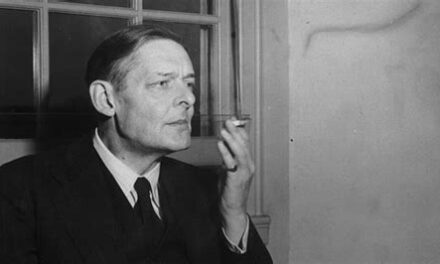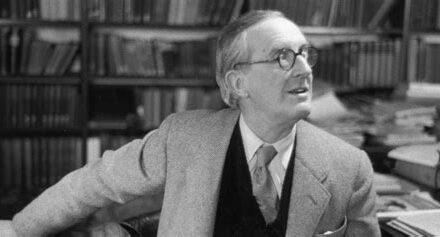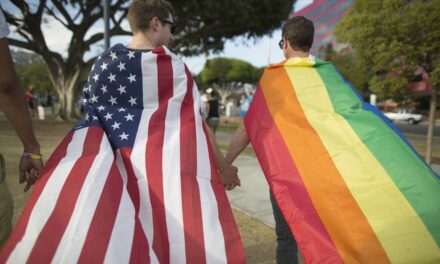I have known Father Frank Pavone for twenty-five years. During that time, I have often worked closely with him and his organization, Priests for Life, in their defense of the unborn. In 2008, I published a book Onward Christian Soldiers: The Growing Political Powers of Catholics and Evangelicals in the United States (Threshold/Simon and Schuster). That book contained portraits of Catholics and Catholic organizations that, in my opinion, were having a decisive impact on of the Catholic Church in our nation.
I wrote about Father Pavone’s Priests for Life, its beginning, and its mission:
“[I]t is is no accident that the most successful Catholic political advocacy group in the nation is an organization of priests. Priests for Life was founded by a San Francisco priest, Lee Kaylor, in 1990. Kaylor wanted to use the pulpit to speak out on pro-life legislation. Since 1993, the organization has been led by Father Frank Pavone, who took over with the permission of Cardinal O’Connor of New York. Pavone epitomizes the new generation of what I call “John Paul II priests,” who have no qualms about addressing pro-life issues. . . Pavone says that it was from O’Connor that he “learned how to preach on the issue of pro-life with conviction and compassion. He taught us that the compassion we have for these women does not require us to be less convicted.” Pavone credits the success of Priests for Life, in part, to the fact that he is a priest and relies on the help of other priests. “The newer priests who have come along under John Paul II are comfortable with the fight—they know how to deal with the enemy and are not surprised by the attacks launched against them.”
This is Part 1 of an interview with Father Pavone about matters that up until now have been little known outside of close circle of friends and supporters.
1. I understand you are concerned about your canonical status as an ordained Catholic priest and the head of Priests for Life. Why is that?
Well, as far as Priests for Life is concerned, I could not be happier with our Board of Directors, Advisors and staff. We are all of one mind in the mission we are carrying out to end abortion, and I enjoy their unanimous support of my leadership. And our base of supporters in the public continues to grow larger every year.
As far as support from leaders in the Church, it is a mixed bag. On the one hand, as people can read on my website, we have a lot of strong support from bishops and Cardinals throughout the world. After all, our mission isn’t complicated: we’re trying to stop the killing of babies.
Even Pope Francis, on the five occasions I have been able to meet with him, has encouraged me in my work. “Go forward with that,” he told me.
But, and it’s sad to say, I’ve suffered from an abuse of authority from a number of bishops, who have lied to me and about me, have tried to block my work and take over my board, have launched fake “investigations,” and have constantly changed the goal posts in their expectations and requirements of me and my ministry.
I have had to repeatedly defend my rights using the processes that Church law provides, and on multiple occasions the Vatican has removed obstacles that certain bishops have put in place, but it’s a constant battle.
Many faithful Christians would presume that if there is a disagreement or dispute in the Church, the bishops would at least treat their priests with respect, have regard for their basic human rights, be honest and show good will. But unfortunately, that’s not the case.
2. So it could like this is a long and complex story of back and forth battles with the hierarchy, with some of the story made public and but a lot of other things behind the scenes.
Let’s take it step by step. First, help us to understand the background. How did you get into fulltime pro-life work as a priest in the first place?
I was ordained to the priesthood for the Archdiocese of New York by Cardinal John O’Connor in 1988. He was a pro-life champion – for him, no issue was more important for the Church to address than abortion. In fact, he started a religious congregation, the Sisters of Life, to help address the problem. And he was instrumental in starting Priests for Life.
My own call to the priesthood, about which I have never had a moment’s doubt, was intertwined from the beginning with a call to the pro-life movement; both began in 1976, when I was a senior at the Port Chester Public High School. Over the years of my seminary formation and my initial years of parish work in Staten Island, NY, my pro-life activities grew, and began to extend beyond the local level to the national level.
Then, after four and a half years of very happy and multi-faceted ministry in a large parish, I felt a “call within a call;” I was certain that I wanted to devote all my time and energy to defending the unborn from abortion.
I set up an appointment with Cardinal O’Connor to ask his permission to do this. And between the time we set the appointment and the day we had it, I got a call from the priest who had started “Priests for Life,” which I had already joined. He told me he was entering military chaplaincy and that we would need a new director of this relatively new ministry. He asked if I was interested. I said yes, and when I asked the Cardinal for permission to do pro-life work full time, I suggested that being the first full-time director of Priests for Life could be the means of carrying out such ministry.
Cardinal O’Connor said yes, and my fulltime ministry as National Director of Priests for Life began on September 1, 1993.
3. So Cardinal O’Connor let you establish your Priests for Life headquarters on Staten Island. At a certain point you transferred to the Diocese of Amarillo, TX. Why did that happen?
Well the first part of that story is that after Cardinal O’Connor died in 2000, his successor, Cardinal Edward Egan, said he wanted me to do parish work. I explained to him that my fulltime pro-life work was not simply an assignment, but a vocation. In conscience, I could not walk away from fulltime pro-life work. And why would he want me to?
Sadly, he showed no understanding or respect for my position. Here I was at the helm of a flourishing national and international ministry which enjoyed the support of the Vatican (where I even spent two years working from 1997 to 1999 in the office charged with fostering the pro-life activities of the Church), and which enjoyed the support of numerous faithful. I had become, arguably, the most visible Catholic priest in fulltime pro-life work, and I was calling others to give all the time and energy they could to defending the unborn.
How, then, would I justify in my own mind stepping away from that work?
Sure, I understand the concept of authority and obedience in the Church. But when I saw how Cardinal Egan refused to even engage in a conversation about my pro-life calling – which Cardinal O’Connor had nurtured and which he even suggested could lead to a new community of priests devoted to pro-life work (just as he had established the Sisters of Life) – and when I was told that Cardinal Egan wasn’t even obliged to give me a reason why he was asking me to step away from my work for the unborn, I objected.
So did a lot of other people, who began writing to the Cardinal and calling his office, explaining that the Church needed more priests engaged in the pro-life cause, not fewer, and that while many priests could serve in parishes, not all had the calling to do what I was doing, traveling full time to advocate for the unborn, engaging the media, the abortion industry and the government on what the Church had already declared was the most pressing moral issue of the day.
I asked the Cardinal to help me.
I had no doubt about my calling as a priest. And I didn’t need a lecture on Canon Law 101.
I needed a spiritual father who could give me the blessing of the Church to fulfill my calling to be a priest who, in conscience, could continue devoting himself fulltime to advancing the protection of the unborn, consistent with the teachings of the Catholic Church.
The Cardinal refused to help me. He refused to be that spiritual father. He had one conversation with me, in which he kept referring to my “charcoal black hair” and that we needed more priests in the parishes with black hair instead of white. The conversation was a one-way street. He had made up his mind, without asking me anything, and was simply there to convey his royal decree.
When I told him that I would inform my Board and associates at Priests for Life of what he had said, and begin consulting with them about the next steps, he said, “You just had your consultation.”
In other words, to hell with the ministry you just spent seven years building and serving, and the dedicated priests and lay men and women who likewise worked day and night to make the ministry a success, and who, with their families, were dependent on the salary they got from Priests for Life. No consultation with them mattered, no further discussion was needed.
Never mind the message given to the pro-life movement: we’re taking this visible pro-life priest who is a national pro-life leader and putting him back in a parish.
The Cardinal had spoken. Nobody else’s opinion was supposed to matter. And he gave no indication that he understood or even heard my concerns.
That’s not “authority” and “obedience.” That’s a failure in leadership – a failure to be a father, a supporter, an encourager, one who helps his priests to flourish in their particular vocations, and use the talents God gave them to serve the wider Church.
Sure, I understand the need for priests in a parish. I also understand the need for the unborn to be protected, and for priests to minister to the pro-life movement. This is a need of the universal Church. A bishop is not just entrusted with his own diocese; he shares responsibility for the good of the entire Church, in all its dimensions – not just in making sure parishes have priests with “charcoal black hair.”
And what was I supposed to say in the parish when I preached? “Well folks, as you know, I just spent seven years telling the world that we have an emergency, a holocaust of children, that we have to stop, and that we have to devote all our energy to doing so.” And then what was I supposed to say next? The emergency has stopped? Or it wasn’t as important as it used to be?
There was no way I could do that. I had made an irrevocable commitment in conscience to devote every ounce of my energy, every moment of my time, to defending the unborn.
To show respect to the Cardinal’s authority, I suggested that I could accept an assignment to a small parish whose pastor was willing to let me continue my work, travels and advocacy with Priests for Life.
A priest I knew offered to do exactly that, and the Cardinal assigned me to that parish.
But as time went on, he indicated – again, without any conversation, but just with a one-way communication – that he didn’t want me doing the work of Priests for Life.
So it wasn’t a matter of needing me in a parish. I had accepted the assignment. It was a matter of not letting me do pro-life work.
It was at that point that I asked him if I could transfer out of the New York Archdiocese, where it was clear I no longer had the support to fulfill my vocation to full time priestly pro-life work.
In order to do that in the Church, a priest needs a “receiving bishop,” and I had one. The bishop of Amarillo, Bishop John Yanta, who had been a member of Priests for Life before becoming a bishop, was convinced, as was I, that abortion is the pre-eminent issue of our day and deserved the pastoral attention of the Church, to the point not only of letting priests devote themselves fulltime to defending the unborn, but also of forming a community of such priests.
ACardinal Egan refused to let me transfer. No explanation. Simply another one-way communication was sent to me, saying the Archdiocese of New York wasn’t allowing its priests to switch to other dioceses.
So I appealed to the Vatican. I visited with Cardinal Castrillon-Hoyos, who was in charge of the Congregation for Clergy, which handles these matters. He had been a friend of Cardinal O’Connor and understood my work. We had a good conversation. As I left his office and was about to walk out the door, he called out to me and said, “Do the Lord’s work – for those who do the Lord’s work, the Lord protects” and he smiled.
Subsequently he told Cardinal Egan to let me leave the Archdiocese and join the Diocese of Amarillo. That occurred in 2005.
That was the first of many victories for our work, but certainly not the last of the battles.
(To be continued…)















We had an experience with Cardnial Egan in Greenwich, CT., before he became leader of Catholics in NY. A local church pastor replaced the Cross of Christ from the altar with an image of the rising Christ, and moved the Blessed Virgin Mary to the side of the church. We objected to Bishop Egan, and he replied, “the pastror has the right to move the ‘furniture in his church.’ We objected that “the Cross was not furniture.” We lost that battle and moved to St. Mary’s in Stamford.
If the most of the leaders of the
Catholic Church had fought abortion from the beginning as vigorously as they hid from the battle, millions of babies would have grown to adults by now who were destroyed instead. God bless Father Pavone and all others who fight for the lives of the Unborn.
Thank God for Father Frank – Mother Angelica went through a lot of the same nonsense – cardinals more concerned with their own agenda than the lives of the faithful!
Father Pavone, you have been a beacon in Catholic darkness. As Laity we need to know how Bishops are treating our Priests. Cardinals and Bishops would do well to remember “All that glitters is not gold.” Father, you are carrying your cross to Calvary as a powerful witness of what “Love One Another” really means. May the Lord have Mercy on errant Hierarchy. Meanwhile, I listened to your presentation at the Texas Right to Life Meeting via RSBN (Praying for America with Father Frank Pavone). I hope many others access that Presentation with Bishop Strickland in attendance. Speak plain, speak Truth. We hear you. May God and His Angels protect and guide you. As you said in your Texas Presentation, LIFE will win…… soon. Thank you for all you have done, are still doing, and for running the race until the end (when black hair turns to white)!